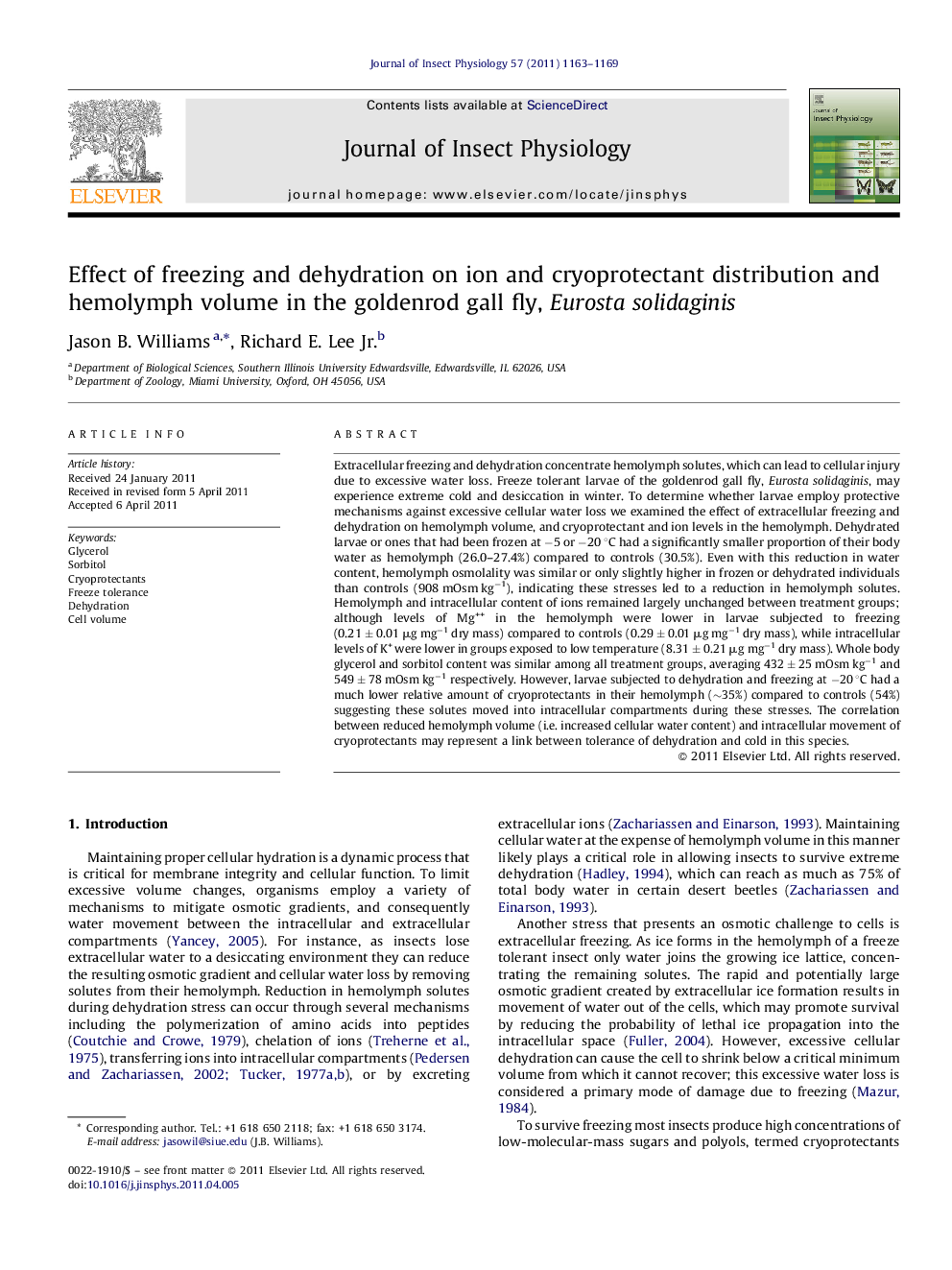| کد مقاله | کد نشریه | سال انتشار | مقاله انگلیسی | نسخه تمام متن |
|---|---|---|---|---|
| 2840754 | 1165354 | 2011 | 7 صفحه PDF | دانلود رایگان |

Extracellular freezing and dehydration concentrate hemolymph solutes, which can lead to cellular injury due to excessive water loss. Freeze tolerant larvae of the goldenrod gall fly, Eurosta solidaginis, may experience extreme cold and desiccation in winter. To determine whether larvae employ protective mechanisms against excessive cellular water loss we examined the effect of extracellular freezing and dehydration on hemolymph volume, and cryoprotectant and ion levels in the hemolymph. Dehydrated larvae or ones that had been frozen at −5 or −20 °C had a significantly smaller proportion of their body water as hemolymph (26.0–27.4%) compared to controls (30.5%). Even with this reduction in water content, hemolymph osmolality was similar or only slightly higher in frozen or dehydrated individuals than controls (908 mOsm kg−1), indicating these stresses led to a reduction in hemolymph solutes. Hemolymph and intracellular content of ions remained largely unchanged between treatment groups; although levels of Mg++ in the hemolymph were lower in larvae subjected to freezing (0.21 ± 0.01 μg mg−1 dry mass) compared to controls (0.29 ± 0.01 μg mg−1 dry mass), while intracellular levels of K+ were lower in groups exposed to low temperature (8.31 ± 0.21 μg mg−1 dry mass). Whole body glycerol and sorbitol content was similar among all treatment groups, averaging 432 ± 25 mOsm kg−1 and 549 ± 78 mOsm kg−1 respectively. However, larvae subjected to dehydration and freezing at −20 °C had a much lower relative amount of cryoprotectants in their hemolymph (∼35%) compared to controls (54%) suggesting these solutes moved into intracellular compartments during these stresses. The correlation between reduced hemolymph volume (i.e. increased cellular water content) and intracellular movement of cryoprotectants may represent a link between tolerance of dehydration and cold in this species.
Figure optionsDownload as PowerPoint slideHighlights
► Eurosta solidaginis larvae likely maintained cellular water volume during dehydration or freezing by moving solutes from their hemolymph into intracellular compartments.
► Unlike in desert and other dehydration tolerant insects, concentration of hemolymph cations did not substantially differ during cell volume stress.
► Cryoprotectants, which constituted a majority of the animal's hemolymph solutes, did appear to move into the intracellular compartment during both dehydration and freezing.
► The correlation between reduced hemolymph volume (i.e. increased cellular water content) and intracellular movement of cryoprotectants may represent a link between tolerance of dehydration and cold in this species.
Journal: Journal of Insect Physiology - Volume 57, Issue 8, August 2011, Pages 1163–1169